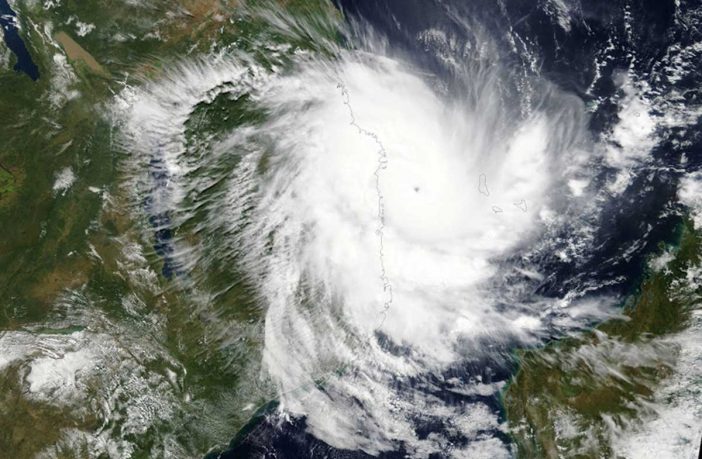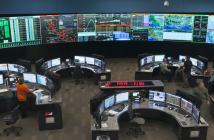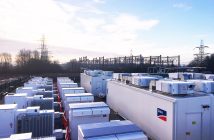Opinion
This article was originally published on Common Edge.
Fellow architects, can we talk? This is gonna hurt, but it needs saying. Were I a poet, I’d write, The end is nigh, and we are why. I’m no bard, though, so I’ll put it this way: Most of us suspect anthropogenic climate change will lead to civilization’s end. Some architects deny the science (“The climate is always changing!”), while others ignore the obvious (denial is a good coping mechanism), but buried within the folds of all angst-addled designer brains lies the fear that today’s toddlers could be the last of us.
You can get up now. I let the elephant out of the room so that we can get down to business. We have a lot of work to do. According to the United Nations Intergovernmental Panel on Climate Change, the deadline to reduce carbon dioxide emissions by 50% is 11 years from now. Our gut tells us we are not going to beat that doomsday clock, for lots of reasons, greed and politics high among them. What we can’t stomach, though, is the realization that our profession is more to blame for global warming than capitalism, Big Oil, or Washington. Buildings are the largest single source of carbon dioxide, the primary greenhouse gas offender. Two generations of architects toying with environmental protection, energy and water conservation, sustainability, and resiliency have done little to ward off the age of extinction.
Yes, I know architects touch only a fraction of new buildings, and that green buildings are a thing. I also understand resistance from clients can torpedo Big Ideas. None of that gets us off the hook. Architects are the construction community’s leaders; builders take their cues from us. A good architect is persuasive, and the greatest among us can sell anything to anyone. Admit it: Over the last 50 years, we’ve had the power to move the built environment from carbon positive to carbon net zero. We didn’t, though, and the result of our failure is disappearing Arctic ice, global rainforests afire, and a melting Antarctica. Building a carbon-zero/carbon-negative society within the next 30 years will take a World War II–scale mobilization vision that’s simply not on the horizon.
I can’t even say we gave it the old college try. In 2009, the American Institute of Architects asked members to commit to the goal of making all new buildings and major renovations 100% carbon neutral by 2030. By now, a decade into the program, we should be 80% of the way there. We are nowhere close, partly because a mere 550 of approximately 20,000 AIA firms signed on to the 2030 Challenge. The United Nations 2017 environmental Global Status Report for buildings and construction reads, “Fossil fuel use in buildings remained almost constant since 2010” and “CO2 emissions from buildings and construction rose by nearly 1% per year between 2010 and 2016.” So much for being ecological stewards.
Climate change is nostra culpa. At its latest annual convention this past June, the AIA passed a resolution that seemed to acknowledge our complicity. The Resolution for Urgent and Sustained Climate Action’s goal is to transform conventional practice into producing net-zero-carbon buildings, not simply plead architects do so. The statement is simultaneously ambitious and ambiguous—and reticent. Unlike the 2030 Challenge, the AIA no longer defines goals or sets deadlines it can’t reach. I’m not sure this is a better approach. Imagine if President Kennedy had said on May 25, 1961, that America “should commit itself to achieving the goal of landing a man on the Moon” without specifying “before this decade is out” and with no NASA standing in the wings. A grand gesture rather than a solemn vow would not have put Neil Armstrong on lunar soil on July 20, 1969, or ever.
At this point in the unfolding disaster, humanity has about a decade to take extreme measures to prevent runaway climate change. Unfortunately, the time needed to wholesale reorient society from fossil fuels to renewables is long. Factor in the need for carbon capture technologies not yet on the horizon, that increasing greenhouse gases is the official policy of America, that Brazil is wantonly destroying the carbon-scrubbing Amazon rainforest, and it’s safe to assume architects are no longer in a position to save the planet as we know it.
What’s a socially conscious architect to do? My recommendation is to stop passing resolutions about winning the war against climate change and begin accepting Mother Nature’s terms of surrender. Start imagining how the built environment will mitigate suffering during our species’ terminal phase. Architecture offers palliative solutions to civilization’s breakdown, which is already underway, quite visibly on the U.S. southern border.
Central America has a population of around 50 million. More than 2 million live in the expanding dry corridor regions of El Salvador, Guatemala, Honduras, and Nicaragua. Erratic weather conditions have devastated crops there for years. Hunger and malnutrition led to societal disintegration, forcing hundreds of thousands to seek refuge in the U.S. In the short term, perhaps the next 30 years, 10 to 17 million Latin American climate refugees will move to the U.S. Tens of millions more may arrive due to the desertification of Europe, Asia, and Africa.
Like it or not, ready or not, here they come. No amount of concrete wall, steel fence, concertina wire, or soldiers will keep them out. No number of concentration camps can warehouse them, nor should they. The U.S. has been the world’s principal contributor to global warming for too long not to accept responsibility for its actions. If you believe the doctrine “you break it, you bought it,” America has a moral duty to take in climate refugees, much as the nation opened itself to boat people following the Vietnam War. In doing so, there are architectural implications to consider.
For example, how best to integrate vast new communities into existing urban and suburban infrastructures in something better than concentration camps and prisons? Architecture and urban planning research are needed to find humane solutions. We need master plans to manage the mass retreat from eroding conditions, and soon. Between 2100 and 2200, all land and sea ice will melt. On this side of the world, oceans, along which 40 percent of global populations now live, will consume Halifax, Boston, New York City, Philadelphia, the District of Columbia, Norfolk, Charleston, and points in between. The entire state of Florida will be under 75 feet water. The Gulf Coast metroplexes of New Orleans and Houston will be no more. New cities to replace abandoned population centers will be needed inland, perhaps within 80 years.
Luckily, there’s plentiful space in this country for both lifelong citizens and new arrivals. Broad areas of the U.S. are pasturelands, a quarter of which are owned by the federal government. Meat and dairy production are significant sources of methane pollution, meaning those lands are doing more harm than good. If we figure out how to replace grazing property for cows with living space for people, we could be ready when the levees break.
Most undocumented migrants entering the U.S. come from Central America. Soon enough, the illegals will be us Norte Americanos. Sometime after the end of the century, swaths of the U.S. will be too hot and dry to sustain large populations. Hundreds of millions will trek into the melting Arctic permafrost. Pray that Canada doesn’t build a wall, because the Yukon and Northwest Territories are home to more unoccupied land than almost anywhere on Earth.
Now-frozen regions of the Canadian wilderness will be North America’s last stand. Before we move up and in, though, not only cities but entire cultures will have to be re-engineered, including geopolitics, national identity, and religion. Without planning, there will be no open arms awaiting us beyond the Great Lakes, no choruses of “kumbaya” past Banff. Armed conflict, if not chaos and barbarity over pandemic disease, diminishing land, and declining food and drinking water, awaits “hothouse Earth.”
I told you this would be painful, but not to worry. Architects are catalysts for bold ideas. To a designer, thawing ground is a greenfield opportunity to reimagine society. It could even be a chance to dust off those improbable proposals of the 1960s and 70s. We have the skills, but more importantly, we have the moral obligation to see this through.
Still sad? I leave you with this: Our species may not go extinct in 80 years, or 800 from now. Earth’s human population may shrink from billions to millions, but pockets of resistance could adapt and survive at the poles for a long time. It is even possible that 3 million years from now, Earth will cool, regain its life-sustaining mid-regions and former coasts, and sapiens of some kind will get a do-over.
Until then, architects can hope for the best but plan for the worst. Our highest and best use as professionals may be as hospice caregivers rather than emergency room physicians. If we get this right, we’ll go out holding hands instead of clubs.
Author: Richard Buday
This opinion article was first published in Arch Daily
……..and is republished with permission.
Disclaimer: The opinion articles expressed in this publication are those of the authors. They do not purport to reflect the opinions or views of Green Building Africa or our staff. The designations employed in this publication and the presentation of material therein do not imply the expression of any opinion whatsoever on the part Green Building Africa concerning the legal status of any country, area or territory or of its authorities.













